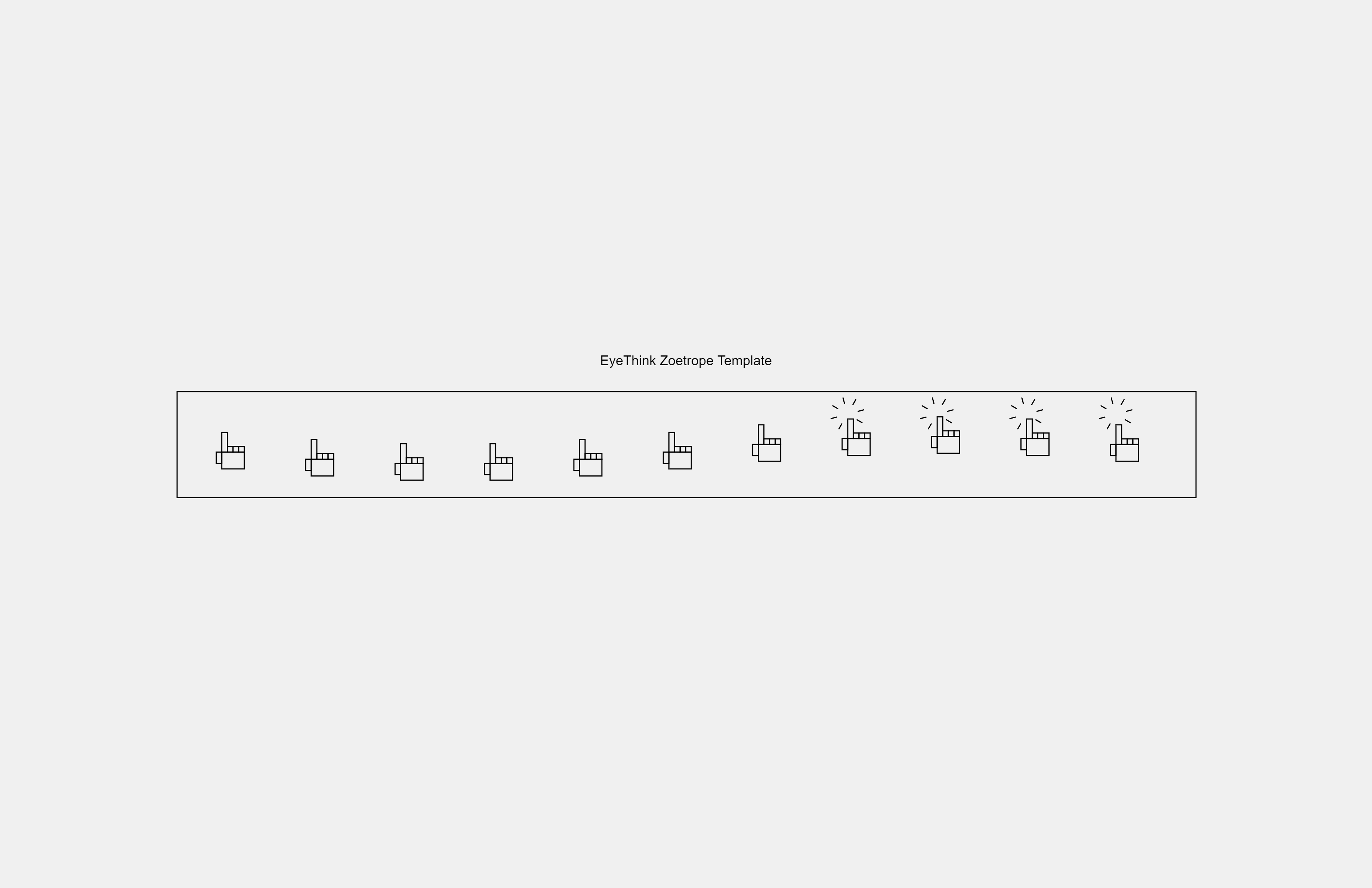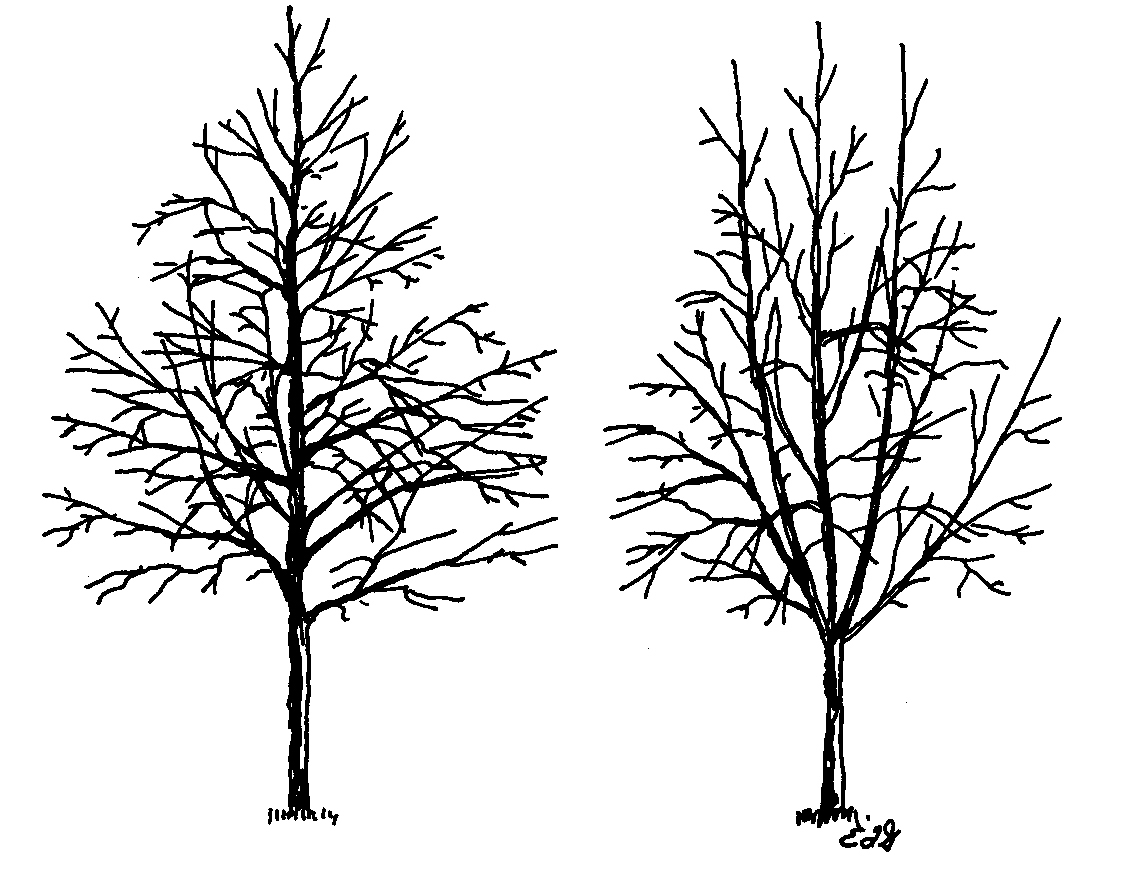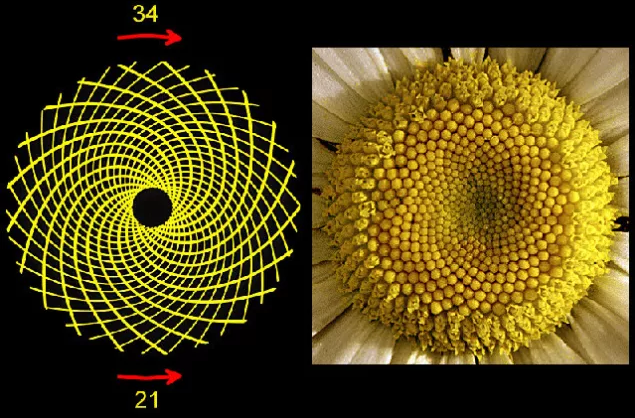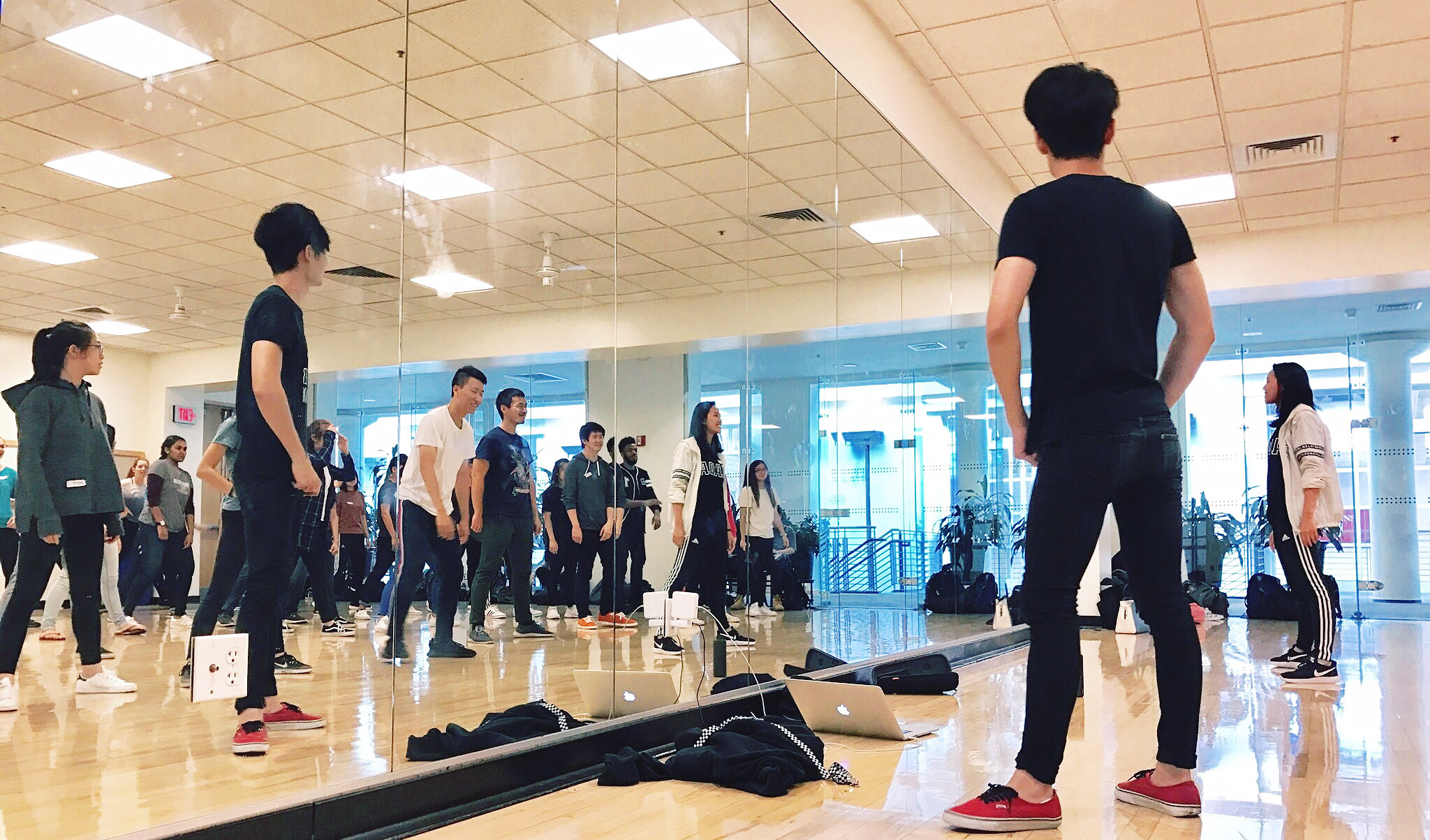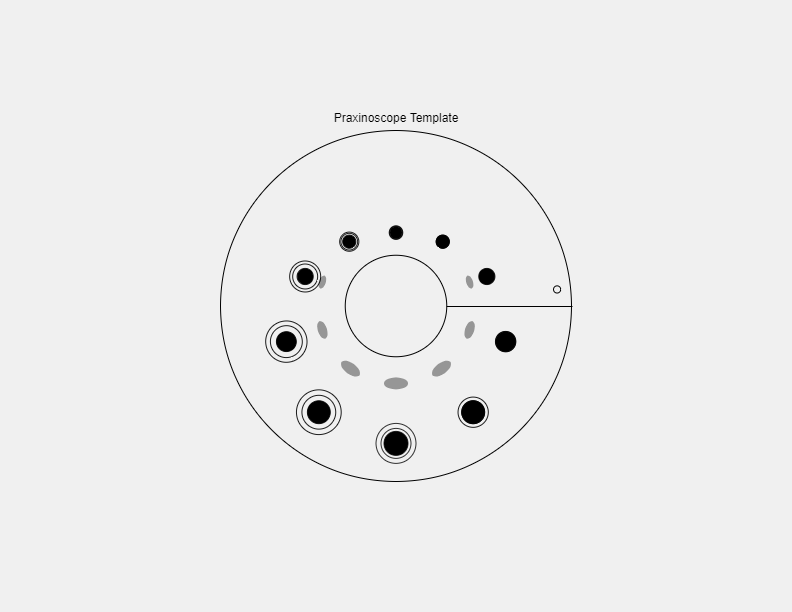
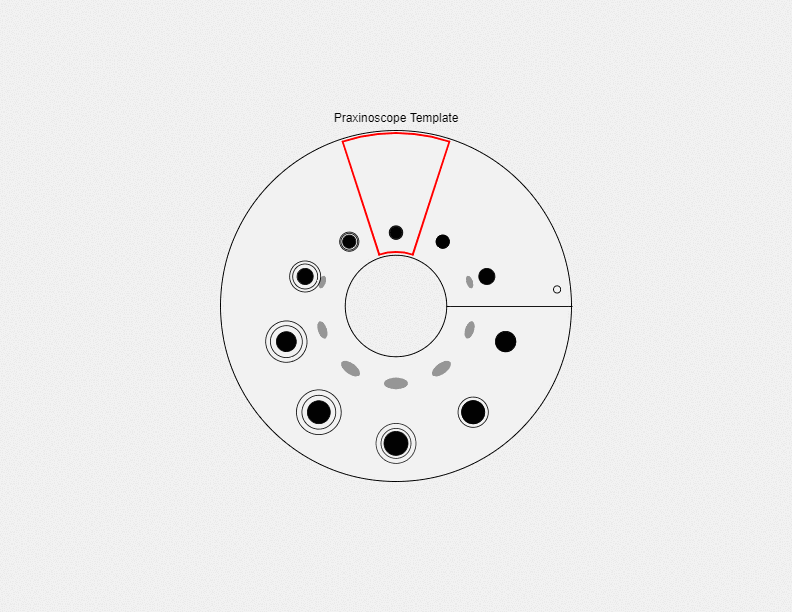
My zoetrope was the main reason behind my looping gif. I wanted to mostly play around with circles and how multiple circles can create different illusions. For example, a growing and shrinking circle can look like a person blinking. Incorporating multiple circles growing at different speeds can give off an alien feel and it could look like a signal receiver. I decided to use part of the template of the elongating ellipse to create the shadow at the base depending on the "growth" of the circle while it was bouncing and being enveloped by two larger circles.
/* // Template for KidzLabs/4M/Toysmith Animation Praxinoscope // https://www.amazon.com/4M-3474-Animation-Praxinoscope/dp/B000P02HYC // https://www.walmart.com/ip/Animation-Praxinoscope-Science-Kits-by-Toysmith-3474/45681503 // Developed for p5.js, September 2018 * Golan Levin */ var inch = 72.0; var diamArtInner = inch * 1.50; var diamArtOuter = inch * 4.80; var diamCutInner = inch * 1.41; var diamCutOuter = inch * 4.875; var holeDy = inch * 0.23; var holeDx = inch * 0.20; var holeD = inch * 0.1; var nFrames = 10; var myFrameCount = 0; var exportFrameCount = 0; var bAnimate = true; var bExportFrameImages = false; var bRecordingSinglePNG = false; //------------------------------------------------------- function setup() { createCanvas(792, 612); // 11x8.5" at 72DPI frameRate(20); smooth(); } //------------------------------------------------------- function draw() { background(240); // Do all the drawing. push(); translate(width/2, height/2); drawCutLines(); drawGuides(); drawAllFrames(); pop(); if (bExportFrameImages){ // Note that myFrameCount is incremented elsewhere. var filename = "myZoetrope_" + nf(myFrameCount,2) + ".png"; saveCanvas(filename, 'png'); if (myFrameCount >= nFrames){ bExportFrameImages = false; } } if (bRecordingSinglePNG) { saveCanvas('myPraxinoscope.png', 'png'); bRecordingSinglePNG = false; } } //------------------------------------------------------- function keyPressed() { switch (key) { case ' ': // Press spacebar to pause/unpause the animation. bAnimate = !bAnimate; break; case 'p': case 'P': // Press 'p' to export a single PNG for the Zoetrope. // Note: This is for 17x11" paper! // Be sure to print at 100%! bRecordingSinglePNG = true; break; case 'f': case 'F': // Press 'f' to export multiple frames // (in order to make an animated .GIF) // such as with http://gifmaker.me/ myFrameCount = 0; exportFrameCount = 0; bExportFrameImages = true; bAnimate = true; break; } } //------------------------------------------------------- function drawCutLines() { fill(0); textAlign(CENTER, BOTTOM); text("Praxinoscope Template", 0, 0-diamCutOuter/2-6); stroke(0); strokeWeight(1.0); noFill(); if (!bRecordingSinglePNG) { fill(255); } ellipse(0, 0, diamCutOuter, diamCutOuter); noFill(); if (!bRecordingSinglePNG) { fill(240); } ellipse(0, 0, diamCutInner, diamCutInner); noFill(); ellipse(diamCutOuter/2 - holeDx, 0-holeDy, holeD, holeD); line (diamCutInner/2, 0, diamCutOuter/2, 0); } //------------------------------------------------------- function drawGuides() { // This function draws the guidelines. // Don't draw these when we're exporting the PNG. if (!bRecordingSinglePNG) { noFill(); stroke(128); strokeWeight(0.2); ellipse(0, 0, diamArtInner, diamArtInner); ellipse(0, 0, diamArtOuter, diamArtOuter); for (var i=0; i<nFrames; i++) { var angle = map(i, 0, nFrames, 0, TWO_PI); var pxi = diamArtInner/2 * cos(angle); var pyi = diamArtInner/2 * sin(angle); var pxo = diamArtOuter/2 * cos(angle); var pyo = diamArtOuter/2 * sin(angle); stroke(128); strokeWeight(0.2); line (pxi, pyi, pxo, pyo); } // Draw the red wedge outline, highlighting the main view. var redWedge = 7; // assuming nFrames = 10 for (var i=redWedge; i<=(redWedge+1); i++) { var angle = map(i, 0, nFrames, 0, TWO_PI); var pxi = diamArtInner/2 * cos(angle); var pyi = diamArtInner/2 * sin(angle); var pxo = diamArtOuter/2 * cos(angle); var pyo = diamArtOuter/2 * sin(angle); stroke(255, 0, 0); strokeWeight(2.0); line (pxi, pyi, pxo, pyo); } noFill(); stroke(255, 0, 0); strokeWeight(2.0); var startAngle = redWedge*TWO_PI/nFrames; var endAngle = (redWedge+1)*TWO_PI/nFrames; arc(0, 0, diamArtInner, diamArtInner, startAngle, endAngle); arc(0, 0, diamArtOuter, diamArtOuter, startAngle, endAngle); for (var i=0; i<nFrames; i++) { var angle = map(i, 0, nFrames, 0, TWO_PI); push(); rotate(angle); var originY = ((diamArtOuter + diamArtInner)/2)/2; translate(0, 0-originY); noFill(); stroke(128); strokeWeight(0.2); //line (-inch/2, 0, inch/2, 0); //line (0, -inch/2, 0, inch/2); pop(); } } } //------------------------------------------------------- function drawAllFrames() { for (var i=0; i<nFrames; i++) { var angle = map(i, 0, nFrames, 0, TWO_PI); var originY = ((diamArtOuter + diamArtInner)/2)/2; push(); rotate(angle); translate(0, 0-originY); scale(0.8, 0.8); // feel free to ditch this var whichFrame = i; if (bAnimate) { whichFrame = (i+myFrameCount)%nFrames; } drawArtFrame (whichFrame); // drawArtFrameAlternate (whichFrame); pop(); } myFrameCount++; } //------------------------------------------------------- function drawArtFrame ( whichFrame ) { // Draw the artwork for a generic frame of the Praxinoscope, // given the framenumber (whichFrame) out of nFrames. // NOTE #1: The "origin" for the frame is in the center of the wedge. // NOTE #2: Remember that everything will appear upside-down! push(); fill(0); noStroke(); // Draw a pulsating ellipse //draw the shadow noStroke(); fill(150,150,150); var t = map(whichFrame, 0, nFrames, 0, 1); var shadow = map(cos(t*TWO_PI), 1, -1, 10, 30); ellipse(0, 45, shadow, shadow*0.5); noFill(); stroke(0); strokeWeight(1); var diam = map(cos(t*TWO_PI), -1, 1, -30, 50); //first circle (biggest) var ell1 = map(cos(t * TWO_PI), 1, -1, 17, (30*(whichFrame/3))); ellipse(0, diam, ell1, ell1); //second circle (second biggest) var ell2 = map(cos(t * TWO_PI), 1, -1, 16, (30*(whichFrame/4))); ellipse(0, diam, ell2, ell2); //center black circle fill(0); var diam2 = map(cos(t * TWO_PI), 1, -1, 15, 30); ellipse(0, diam, diam2, diam2); pop(); } //------------------------------------------------------- function drawArtFrameAlternate( whichFrame ) { // An alternate drawing test. // Draw a falling object. // Draw a little splat on the frame when it hits the ground. if (whichFrame == (nFrames-1)) { stroke(0, 0, 0); strokeWeight(0.5); var nL = 10; for (var i=0; i<nL; i++) { var a = HALF_PI + map(i, 0, nL-1, 0, TWO_PI); var cx = 12 * cos(a); var cy = 10 * sin(a); var dx = 16 * cos(a); var dy = 13 * sin(a); line (cx, 45+cy, dx, 45+dy); } } // Draw a little box frame fill(255); stroke(0, 0, 0); strokeWeight(1); rect(-5, -50, 10, 100); // Make the puck accelerate downward var t = map(whichFrame, 0, nFrames-1, 0, 1); var t2 = pow(t, 2.0); var rh = 8 + whichFrame * 0.5; // wee stretch var ry = map(t2, 0, 1, 0, 100-rh) - 50; noStroke(); fill(0, 0, 0); rect(-5, ry, 10, rh); } |

